
Abu Dhabi: As the UAE’s largest emirate, Abu Dhabi is replete with landmarks that echo both the nation’s rich cultural past and its tremendous development since 1971. Ranging from architectural marvels to stunning forts and natural wonders, the landmarks showcase the UAE’s values, and are a must-see for tourists and residents alike.
Abu Dhabi City
Sheikh Zayed Grand Mosque
This is the foremost image that comes to mind when people speak of Abu Dhabi. The mosque’s architectural grandeur and beauty are well-known, and it has allowed millions of people to learn more about the UAE’s values and the tolerance enshrined in Islam.
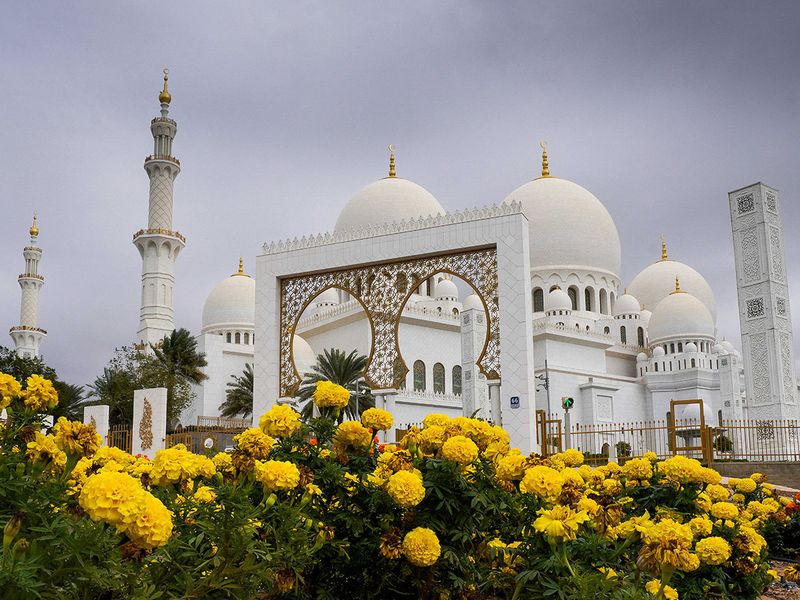
The mosque first opened in December 2007, after Eid Al Adha prayers led by President His Highness Sheikh Khalifa Bin Zayed Al Nahyan. Featuring 82 domes and 1,1192 imposing columns, it incorporates Moorish, Mughal, Ottoman, Fatimid and Mameluke architectural elements. Inside its main prayer hall, the mosque houses the world’s largest hand-knotted carpet — a massive green-yellow-red piece in a medallion design — and a massive 12-tonne German chandelier.
The Grand Mosque’s call to prayer is broadcast across Abu Dhabi’s mosques five times a day, and its three prayer halls cater to thousands of worshippers each year. The facility itself welcomes up to 55,000 visitors every day.
The expansive grounds are also the burial place of the UAE’s founding father, the late Sheikh Zayed Bin Sultan Al Nahyan, who first conceived of building a unifying Islamic cultural structure in the 1980s.
Qasr Al Hosn
Dating long before the formation of the UAE, Qasr Al Hosn has stood witness to the transformation of the emirate, and is, therefore, the emirate’s first national monument. It was once a watchtower or fort — qasr in Arabic, built in 1790 and therefore Abu Dhabi’s first permanent structure. This was later expanded into the royal residence after Abu Dhabi struck its first oil concessions in the 1930s.
_resources1_16a0854b138_original-ratio.jpg)
Qasr Al Hosn was repurposed into the National Archives in the 1980s, and the Cultural Foundation structure was built in the same block to host cultural performance and exhibitions. The structures underwent extensive conservation again until 2018: now, Qasr Al Hosn is a museum that offers one of the most authentic glimpses into the life of the past, whereas the Cultural Foundation is an important home of culture that incorporates the Abu Dhabi Children’s Library and the House of Artisans for artistic learning.
Louvre Abu Dhabi
The iconic museum is a treasure trove for lovers of the arts, and was opened to much anticipation in November 2017. It features more than 600 pieces, including works of art by Da Vinci, Monet and Auguste Rodin, as well as ancient artefacts like Neolithic weapons and Egyptian sarcophagi. Located on the vibrant Saaidyat Island, the museum is the first major international museum to open in Abu Dhabi. It has been built under a UAE-France intergovernmental agreement that also includes collaborative exhibitions with French museums until 2027.

One of its unique features is the way the museum traces the history of humankind in a chronological manner, thereby highlighting shared values and experiences through the ages.
Louvre Abu Dhabi is a draw even for those not well-versed in the arts. Its marvellous architecture by French architect Jean Nouvel saw the museum built in the model of an Emirati village, and one can enjoy the experience of being under a traditional palm frond-thatched roof by standing under the museum’s eight-ton floating dome. The courtyard is also surrounded by the blue waters of the Arabian Gulf, and a beloved location for photographers.
Qasr Al Watan
Abu Dhabi’s Presidential Palace is the emirate’s newest landmark, and a feast for the eyes. Its opulent architecture, golden arches and high ceilings are mesmerising, and visitors can take a look at Presidential Gifts to the UAE, or immerse themselves in its massive library.
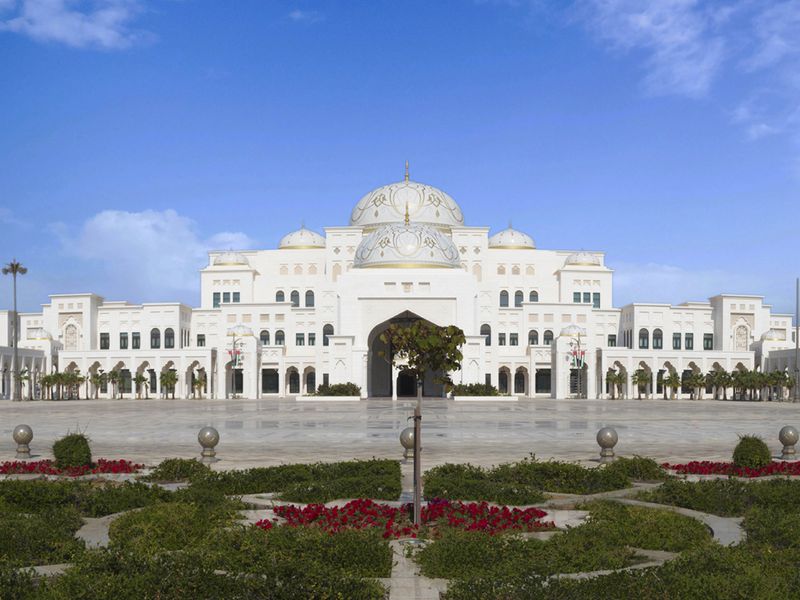
The library itself features important historic documents, including the UAE Constitution, as well as rare manuscripts and works of Arabian scholarship. In the evenings, the palace hosts a spectacular light show to captivate visitors.
The Founder’s Memorial
This is a memorial honouring the UAE’s founding father. A three-dimensional portrait of Sheikh Zayed designed by artist Ralph Helmick is housed here in a 30-metre-high pavilion. The portrait is a constellation containing 1,327 geometric shapes suspended on 1,110 cables to create a series of personal encounters with Sheikh Zayed’s image. At night, the suspended shapes shine like stars, and this is designed as a reminder of Sheikh Zayed’s role as a guiding light for the UAE and its people. The portrait can also be viewed from multiple vantage points around the memorial, which is itself placed in 33,000 square metres of landscaped grounds.
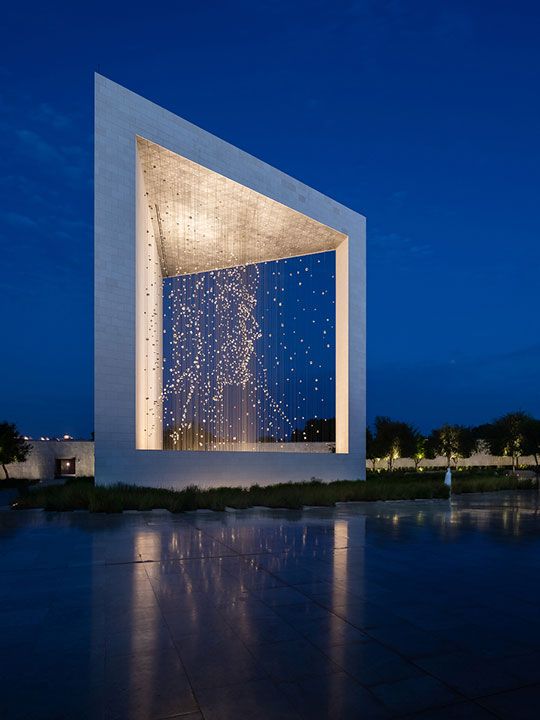
Surrounding the portrait is a Sanctuary Garden, including seating areas and a traditional falaj or irrigation system. A Heritage Garden includes medicinal desert plants, and an elevated offers views of the Arabian Gulf, the city’s skyline, and the portrait.
Emirates Palace
Although not an official property, this lavish hotel is famous for its Arabesque style, its 24-karat gold leaf coffee and a gold vending machine within its premises.
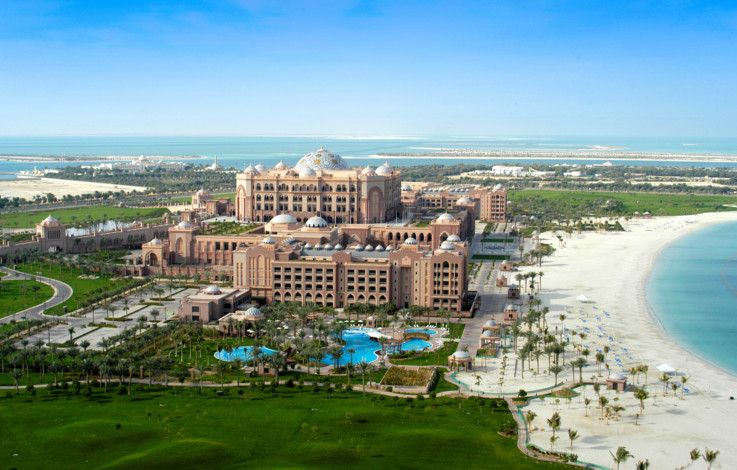
From wing to wing, the building stretches over a kilometre, and it is surrounded by green gardens. Bordered by the perfect Arabian beach, the five-star property and its interiors have been featured in a number of Hollywood and Bollywood movies.
Wahat Al Karama
The name of this memorial literally means ‘the oasis of dignity’. Located in view of the Sheikh Zayed Grand Mosque, it pays tribute to the UAE’s martyrs. A total of 31 massive aluminium-clad tablets, each leaning on the other, symbolise the unity, solidarity and mutual support that bind together leadership and citizens with the servicemen and women who protect them. The long spine at the rear of the Memorial is engraved with the Pledge of Allegiance of the UAE Armed Forces and symbolically supports the other panels.

A series of poems and quotes by Sheikh Zayed are also inscribed on the tablets.
A solid polygon at the end of the memorial has the names of all UAE martyrs inscribed on its inner walls. This is known as the Pavilion of Honour. On each illuminated plate is also listed the rank, service branch, location and date of death of the person.
Al Ain
Al Ain Museum
This is the oldest museum in the UAE, established in 1969 under Sheikh Zayed’s leadership. Built to chart the history of Al Ain from the Stone Age through to the foundation of the UAE in 1971, the museum houses artefacts recovered from the many archaeological sites scattered across the region, including flint tools and arrowheads dating back to the sixth millennium BCE.
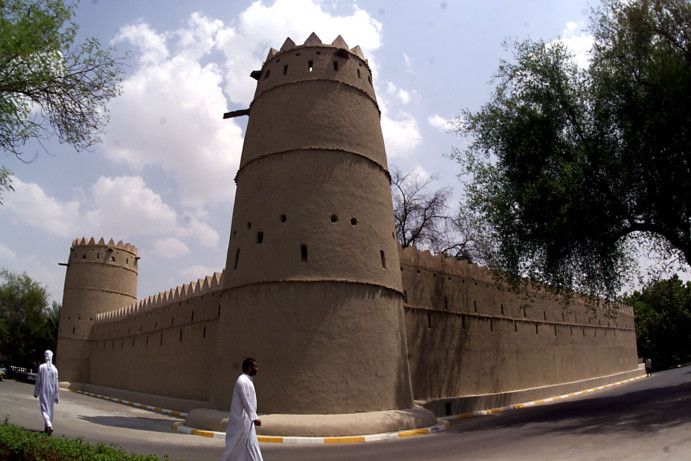
The picturesque Sultan Fort, also known as the Eastern Fort, lies within the grounds of Al Ain Museum and forms one of its major attractions. Located at the eastern edge of Al Ain Oasis, it once sat at the heart of the former village of Hara in Al Ain. The fort, built in 1910, is a well-preserved mud-brick structure with towers at three of the corners and a gate in the southern façade.
The Archaeology section of the museum includes imported Mesopotamian (modern Iraq) pots dating back 5,000 years and found in tombs excavated on nearby Jebel Hafeet mountain, Abu Dhabi’s tallest peak. The museum also documents the rise of Bronze Age society dating back 4,500 years, when large mud-brick structures were built in Hili area, and the people constructed the above-ground stone tombs. The museum also has a moon rock given to the UAE by Nasa — the National Aeronautics and Space Administration in the United States — following the Apollo 17 trip to the moon in 1972.
Qasr Al Muwaiji
Qasr Al Muwaiji was built in the time of Sheikh Zayed bin Khalifa the First (r. 1855-1909) by his son, Sheikh Khalifa bin Zayed bin Khalifa. Later it became the home and administrative base. The UAE’s Founding Father, and the UAE’s current president, His Highness Sheikh Khalifa bin Zayed Al Nahyan, was born there. He spent much of his youth there, learning from his father.
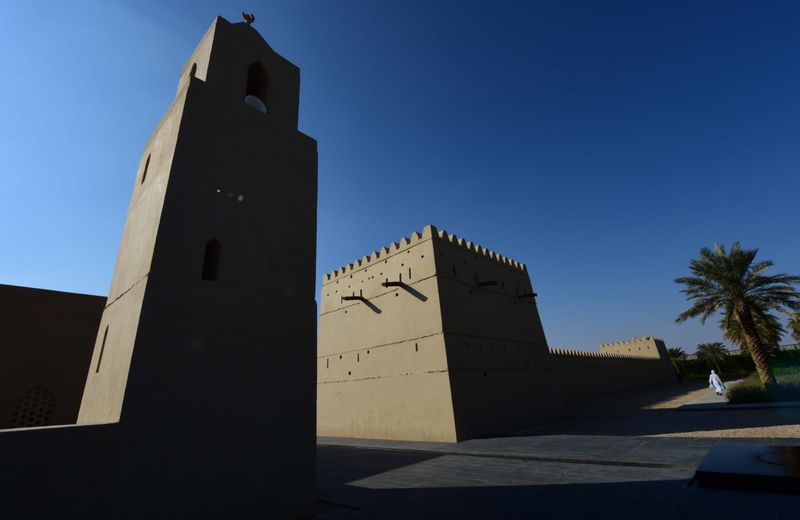
The fort building is a square enclosure with projecting corner towers and a grand entrance gate. Sheikh Zayed bin Sultan Al Nahyan made many additions to the fort, reflecting its growing importance as the place of government in Abu Dhabi’s eastern region The fort’s mosque also was enlarged, and Qasr Al Muwaiji’s significance as a focus for the community increased as people came there to gather, pray and celebrate.
Beginning in the 1970s, the compound underwent several phases of restoration, culminating in a major regeneration project that has again made Qasr Al Muwaiji an important public space in Al Ain. An exhibition hall has been built to tell the story of the fort and its inhabitants.
Al Jahili Fort
Since opening its gates to the public in 2008, Al Jahili Fort has been a focal point of activities associated with the philosophy, culture and heritage of Abu Dhabi. Al Jahili is one of the largest forts in the UAE, and was built in the 1890s on the orders of Sheikh Zayed bin Khalifa Al Nahyan, commonly known as Zayed the First, as a home for members of the ruling Al Nahyan family.
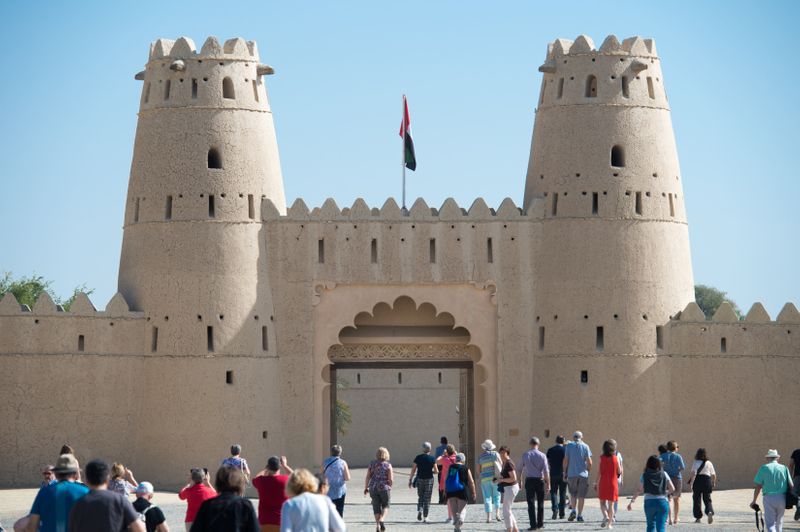
Between 2007 and 2008, the fort was restored by the Department of Culture and Tourism — Abu Dhabi and transformed into a cultural centre and tourist attraction. It now houses a permanent exhibition devoted to Sir Wilfred Thesiger, British explorer, travel writer and photographer who, with his Emirati and Omani companions, crossed the world’s largest sand mass, the Empty Quarter, twice in the 1940s. Al Jahili Fort is also home to a temporary exhibition gallery. The fort itself is surrounded by a lush garden.








